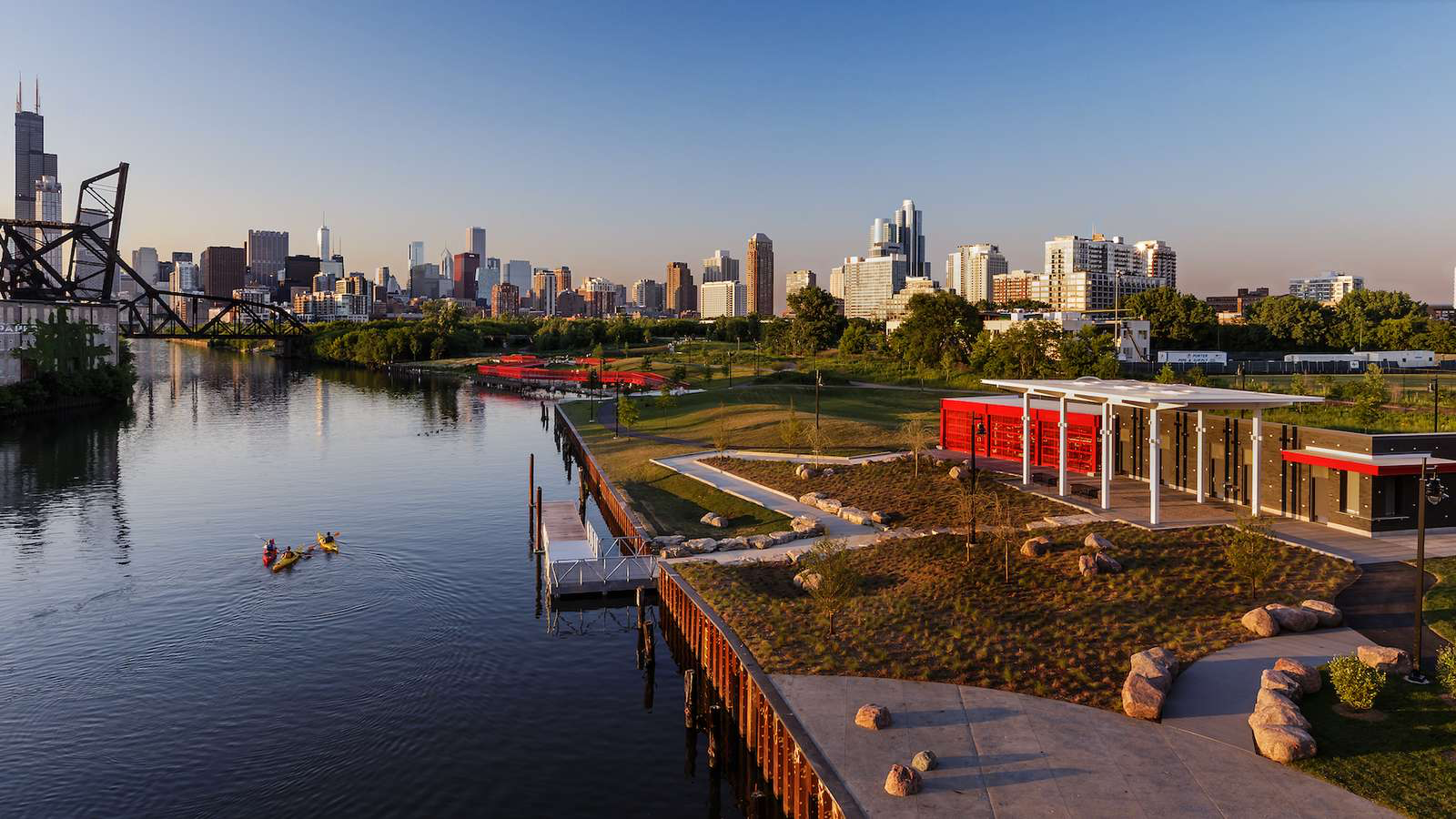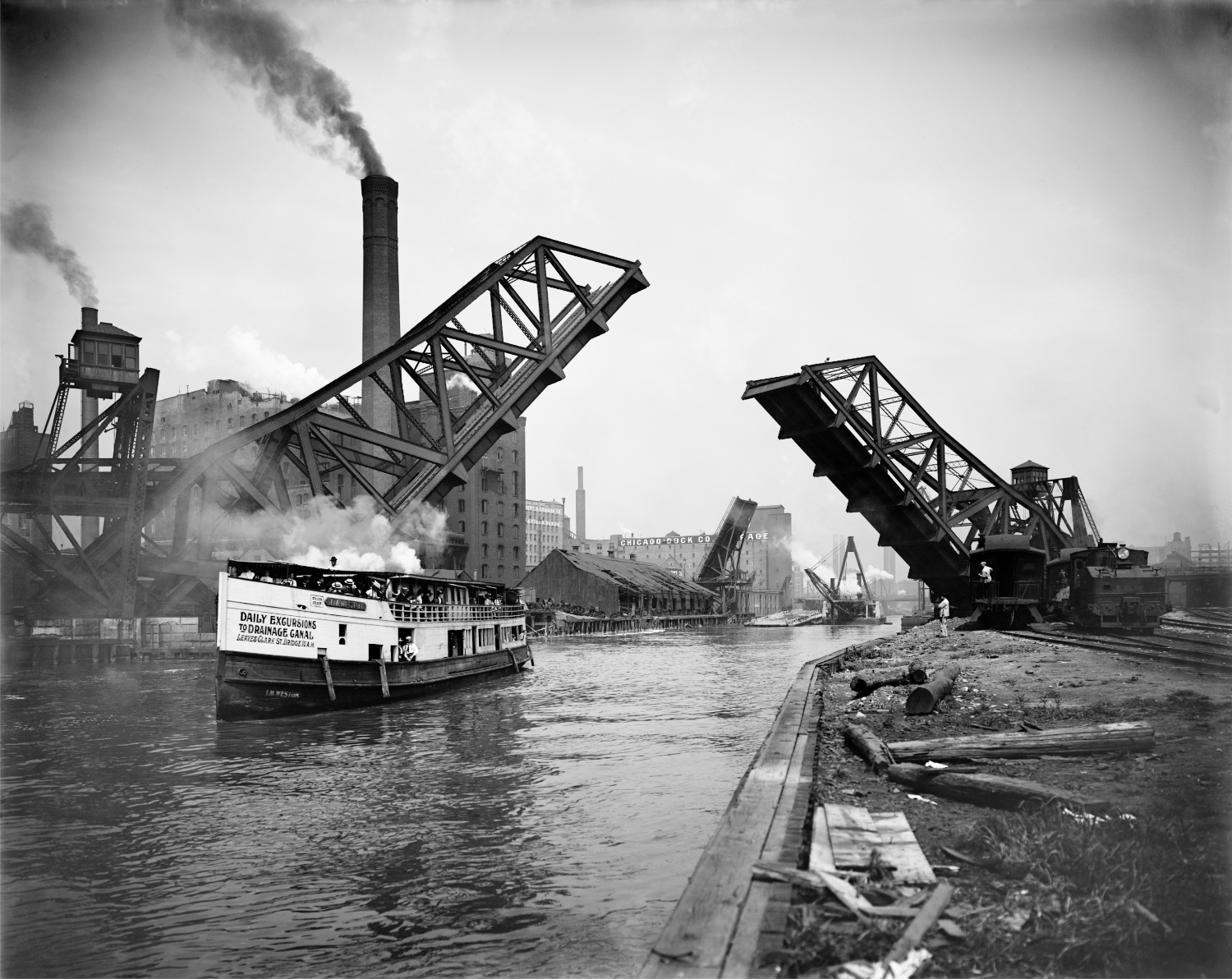
History of the
Chicago River
While you might be most familiar with the Chicago River turning green during the annual St. Patrick's Day Parade, it also serves an important role as a commercial, industrial, and recreational waterway the other 364 days of the year. However, the river wasn’t always as beloved as it is now. Significant investments and innovation over the past century have made the river a cleaner and healthier waterway for Chicago.
During Chicago's rapid industrialization in the late 1800s, the Chicago River had to face the regular dumping of sewage and harmful chemicals.
Before the Clean Water Act of 1972, there were no laws or mandates stopping companies from contaminating urban waterways with harmful waste. The sewage, rubbish, and chemicals flowed from the Chicago River into Lake Michigan, posing a health risk to the city's drinking water. The threat of losing a viable water source prompted the Sanitary District of Chicago, now named the Metropolitan Water Reclamation District of Greater Chicago (MWRD), to undertake a massive engineering project that reversed the direction of the river in 1900. The project was dubbed one of the greatest civil engineering achievements of the 20th century.
The reversal carried contaminated water away from the city's drinking water source to the newly built Chicago Sanitary and Ship Canal that flows into the Illinois River, which eventually flows into the Mississippi River and ends in the Gulf of Mexico.
Since the reversal, the city and many passionate stakeholders have worked to improve the water quality of the river so that it may serve as more than just a commercial highway and open sewer.
“Chicago is a city shaped by water. Expanded access, stronger infrastructure and enhanced storm water management help to protect our spectacular lake and rivers, connect us with Chicago’s heritage, create new ways to enjoy the city, and ensure that future generations will continue to benefit from Chicago’s unique access to the Great Lakes ecosystem.”
— The City of Chicago (2015)
In 1972, the U.S. Clean Water Act was established to prevent direct discharge of pollutants into any body of water across the country, thus ensuring that the water quality would be safe for both the public and underwater ecosystems.
Implementing the Clean Water Act in Chicago was just one step toward restoring the waterway. The water quality of the Chicago River was further improved by the adoption of the MWRD’s Tunnel and Reservoir Plan (TARP) in 1972. The first tunnels and reservoirs went online in 1981 to collect combined stormwater and sewage before it overflowed into the waterways of Chicago. In 1986, the project won the award for most outstanding civil engineering project of 1986 from the American Society of Civil Engineers.
In 2012, the Chicago River was finally approved for general and recreational usage in eight segments of the river by the U.S. EPA and has since seen even more improvement and investment. In 2016 the MWRD introduced Ultraviolet Irradiation Technology, a more cost efficient and effective method to disinfect the wastewater it treated.
The mission to create clean and flourishing urban waterways in and around the City of Chicago is ongoing and requires collaboration and stewardship amongst all Chicagoans.
The City of Chicago recently stated, “The goal is to reconnect Chicagoans with the river, improve both human well-being and the environment, while enhancing economic development that is sustainable for future generations.” Progress has been made towards that goal - Chicagoans and visitors can now enjoy a world-class Riverwalk, boat rides, kayaks, and other water activities, thanks to historic and recent investments in clean water.
The most recent step towards a cleaner Chicago River is the launch of H2NOW, a platform for piloting real-time water quality monitoring technologies on the Chicago River. This first-of-its-kind technology creates transparency about water quality, allowing Chicagoans and visitors to make informed decisions about interacting with the river. Click here to learn more about the data we're capturing!






